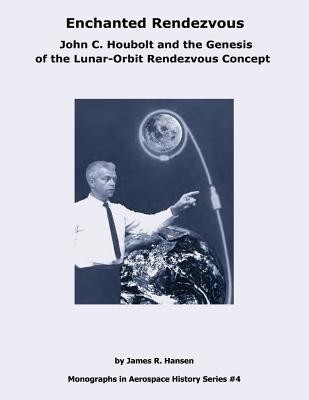
- We will send in 10–14 business days.
- Author: James R Hansen
- Publisher: CreateSpace Independent Publishing Platform
- Year: 2013
- Pages: 84
- ISBN-10: 1493657070
- ISBN-13: 9781493657070
- Format: 21.6 x 27.9 x 0.4 cm, softcover
- Language: English
- SAVE -10% with code: EXTRA
Reviews
Description
One of the most critical technical decisions made during the conduct of Project Apollo was the method of flying to the Moon, landing on the surface, and returning to Earth. Within NASA during this debate several modes emerged. The one eventually chosen was lunar-orbit rendezvous (LOR), a proposal to send the entire lunar spacecraft up in one launch. It would head to the Moon, enter into orbit, and dispatch a small lander to the lunar surface. It was the simplest of the various methods, both in terms of development and operational costs, but it was risky. Since rendezvous would take place in lunar, instead of Earth, orbit there was no room for error or the crew could not get home. Moreover, some of the trickiest course corrections and maneuvers had to be done after the spacecraft had been committed to a circumlunar flight. Between the time of NASA's conceptualization of the lunar landing program and the decision in favor of LOR in 1962, a debate raged between advocates of the various methods. John C. Houbolt, an engineer at the Langley Research Center in Hampton, Virginia, was one of the most vocal of those supporting LOR and his campaign in 1961 and 1962 helped to shape in a fundamental way the deliberations. This monograph is an important contribution to the study of NASA history in general, and the process of accomplishing a large scale technological program (in this case Apollo) in particular. In many ways, the lunar mode decision was an example of heterogeneous engineering, a process that recognizes that technological issues are also simultaneously organizational, economic, social, and political. Various interests often clash in the decision-making process as difficult calculations have to be made and decisions taken. What perhaps should be suggested is that a complex web or system of ties between various people, institutions, and interests brought forward the lunar-orbit rendezvous mode of going to the Moon in the 1960s.
EXTRA 10 % discount with code: EXTRA
The promotion ends in 20d.07:41:43
The discount code is valid when purchasing from 10 €. Discounts do not stack.
- Author: James R Hansen
- Publisher: CreateSpace Independent Publishing Platform
- Year: 2013
- Pages: 84
- ISBN-10: 1493657070
- ISBN-13: 9781493657070
- Format: 21.6 x 27.9 x 0.4 cm, softcover
- Language: English English
One of the most critical technical decisions made during the conduct of Project Apollo was the method of flying to the Moon, landing on the surface, and returning to Earth. Within NASA during this debate several modes emerged. The one eventually chosen was lunar-orbit rendezvous (LOR), a proposal to send the entire lunar spacecraft up in one launch. It would head to the Moon, enter into orbit, and dispatch a small lander to the lunar surface. It was the simplest of the various methods, both in terms of development and operational costs, but it was risky. Since rendezvous would take place in lunar, instead of Earth, orbit there was no room for error or the crew could not get home. Moreover, some of the trickiest course corrections and maneuvers had to be done after the spacecraft had been committed to a circumlunar flight. Between the time of NASA's conceptualization of the lunar landing program and the decision in favor of LOR in 1962, a debate raged between advocates of the various methods. John C. Houbolt, an engineer at the Langley Research Center in Hampton, Virginia, was one of the most vocal of those supporting LOR and his campaign in 1961 and 1962 helped to shape in a fundamental way the deliberations. This monograph is an important contribution to the study of NASA history in general, and the process of accomplishing a large scale technological program (in this case Apollo) in particular. In many ways, the lunar mode decision was an example of heterogeneous engineering, a process that recognizes that technological issues are also simultaneously organizational, economic, social, and political. Various interests often clash in the decision-making process as difficult calculations have to be made and decisions taken. What perhaps should be suggested is that a complex web or system of ties between various people, institutions, and interests brought forward the lunar-orbit rendezvous mode of going to the Moon in the 1960s.


Reviews